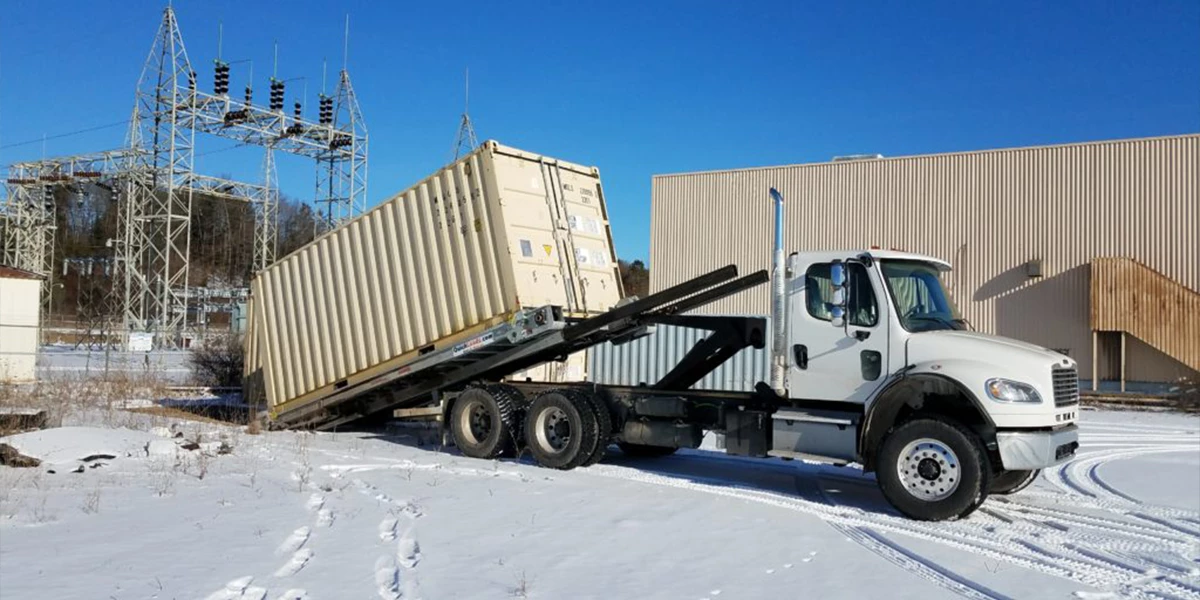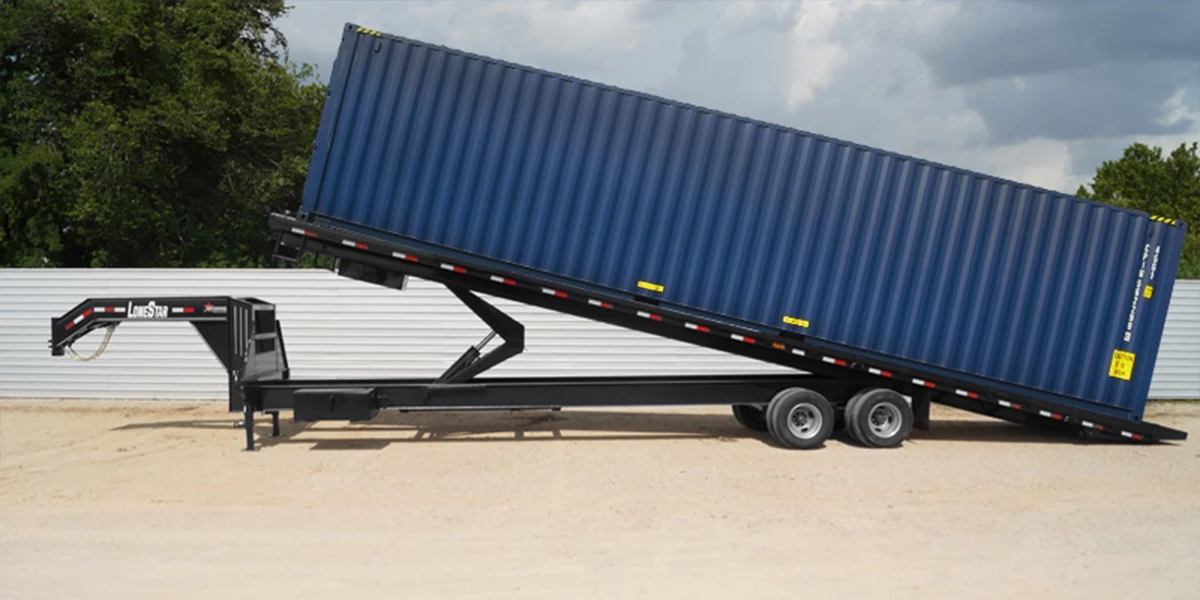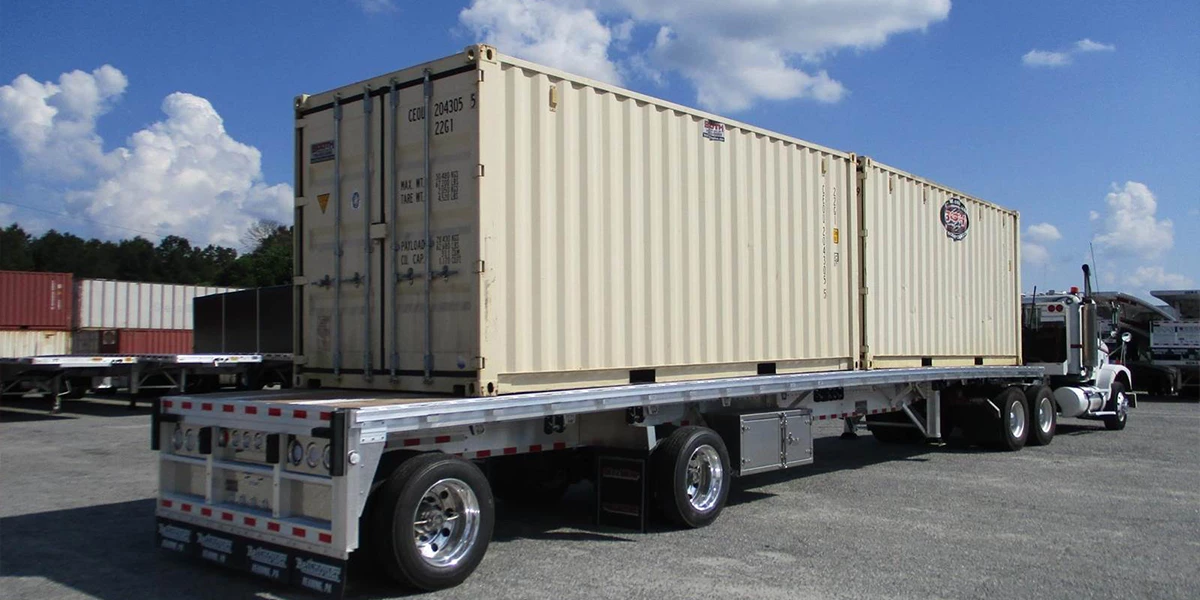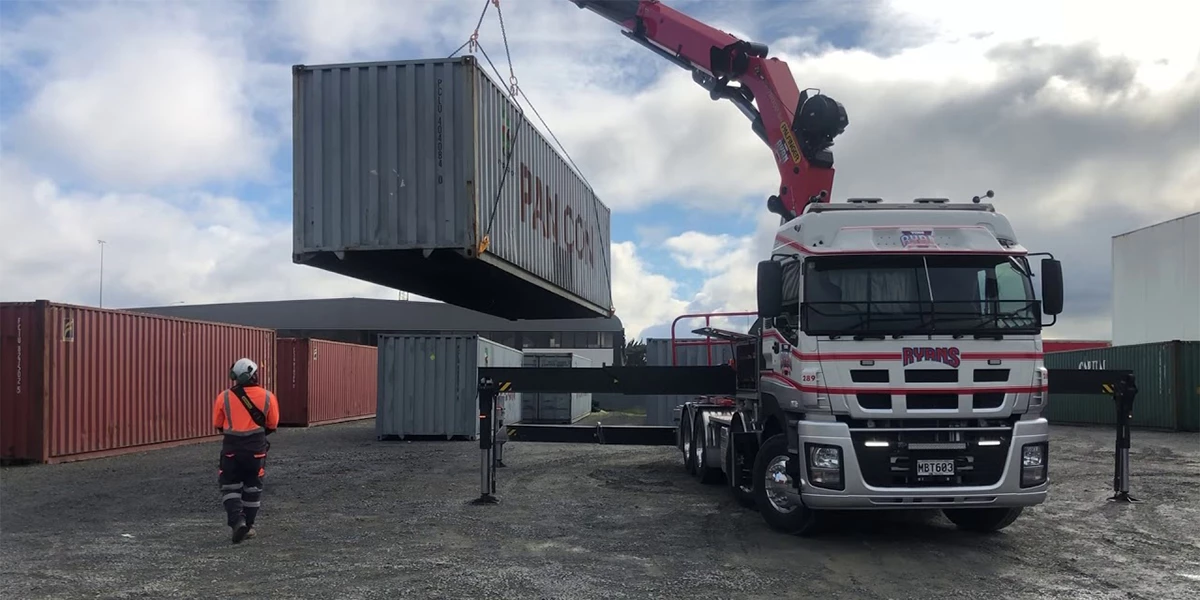Buyer's Guide
Bringing superior expertise and craftsmanship to every project
Understanding Your Delivery Options
There are several methods we use for shipping container delivery, each with different capabilities and requirements:
Tilt-Bed Truck
This truck is suitable for containers up to 24’ long and requires at least 60 feet of straight-line clearance to deliver the container. This truck type is suitable for inner-city deliveries and limited-access sites.

Tilt-Bed Truck and Trailer Combo
This can handle containers up to 45’ in length, or combinations of smaller containers. It needs 100 feet of straight-line clearance for safe delivery.

Flatbed Truck
Ideal for longer distances, this truck can deliver containers up to 45’ in length. However, it can’t place containers on the ground. You’ll need a forklift or crane at your site to offload the container.

Crane Truck
Used for containers up to 24’ in length. This truck can place a 20’ container about 25’ away from the truck, making it ideal for complex deliveries like over fences or on elevated platforms.

Customer Pick-Up
If you prefer to organize your own transportation, you can go directly to the container depot/yard and pick up the container yourself.
Choosing the Doors Orientation
Think about the exact spot where you’d like the driver to deposit the container, and consider the overall environment around that spot. These considerations will aid you in deciding between the two orientations:
Doors to the Cab
In this case, the doors will face toward the rear end of the truck. Essentially, they’ll be the last thing to leave the trailer during the delivery process. This option might be a perfect fit if you’re planning to snug your container up against a structure like a fence, barn, or similar.
Doors to the Back
Here, the doors will face away from the truck, making them the first thing to leave the trailer during the delivery.
Delivery Policies

Onsite Presence
Plan to have at least two people on site on the delivery day to act as spotters if needed.

Weather
If bad weather is forecast on your delivery day, contact us to reschedule.

Rescheduling & Cancellation
Your delivery date may be rescheduled due to unforeseen circumstances. If you refuse delivery, a restocking fee and other associated fees will be deducted from your refund.

Fees
Any excess time spent on site beyond the standard 30 minutes for unloading may incur additional charges.
Preparing for Delivery
Length Restrictions: For a 20ft container delivery our trucks need a minimum of 60ft in a straight line. For a 40ft container delivery, our trucks need a minimum of 100ft in a straight line.

Suitable Ground Conditions: Make sure the ground is dry and firm, such as asphalt, concrete, or compacted gravel. Avoid loose dirt, wet and muddy areas, grass (if the soil is soft), ice and snow, steep inclines, sloping surfaces, and drains. The drop site must be free of obstacles like rocks, stumps, and tree limbs.
Road Accessibility: At a minimum standard, the drop site must be on a maintained 2-lane county road. Heavy trucks need more turning radius than standard vehicles.
Clearance and Visibility: A minimum height and width of 14 feet is needed for moving a container. Up to 20 feet of height is required for unloading the container. Ensure sufficient clearance for low-hanging tree branches, gates, ditches, and other obstacles.
Drop Site: The site should be level and stable. If the container is not level, the doors can become difficult to operate. Hard blocks of wood, stone pavers, railroad ties, or gravel can be placed at the corners to evenly distribute weight.
